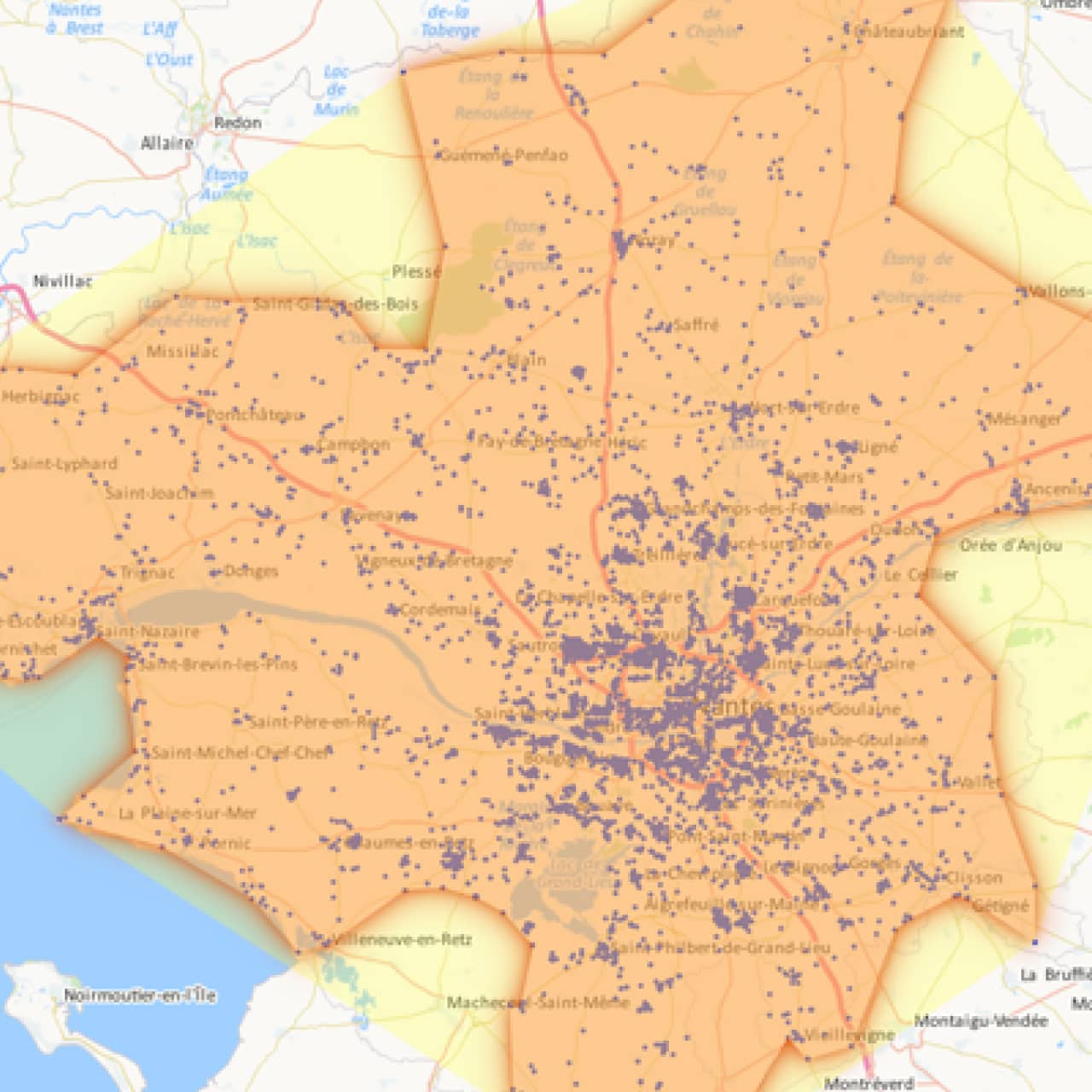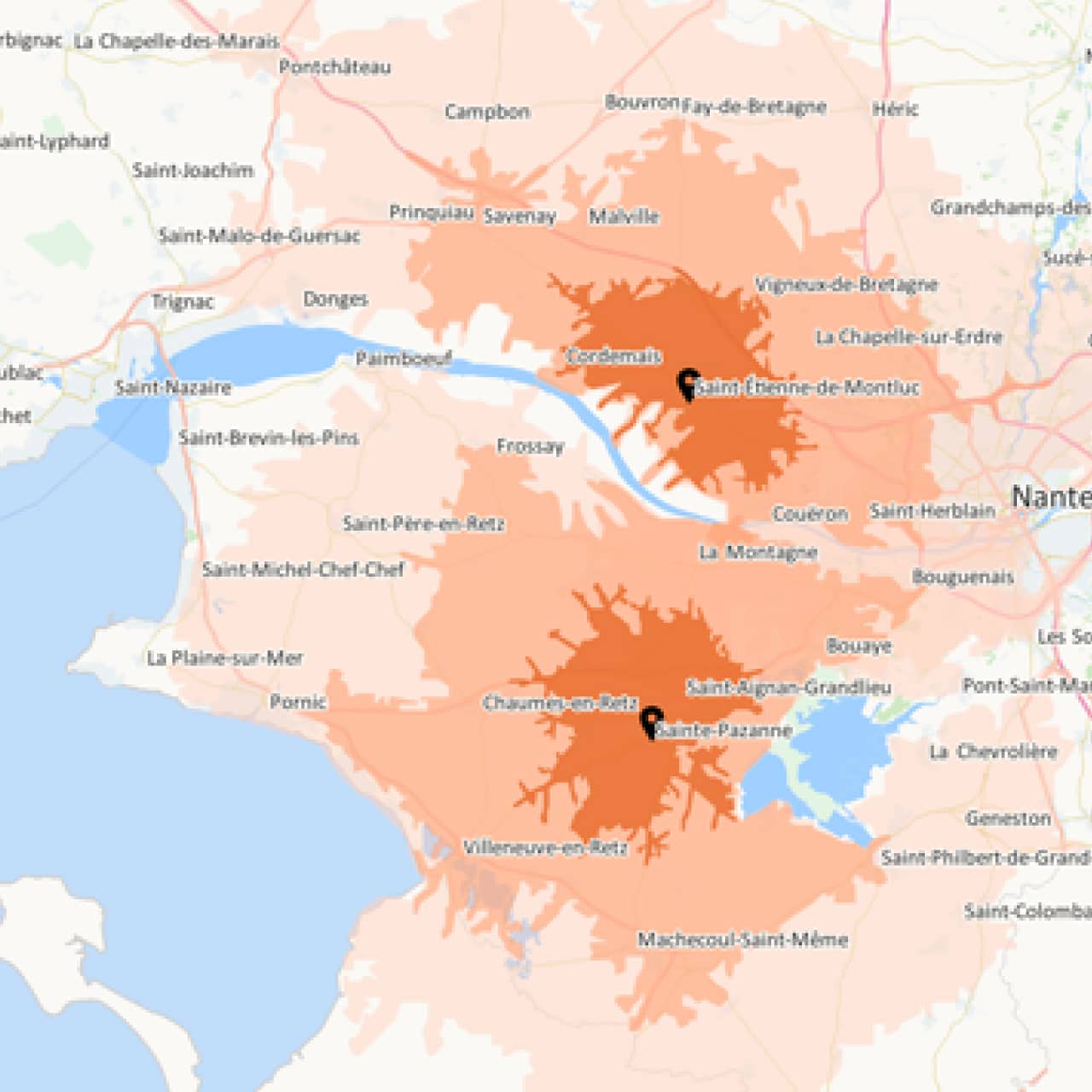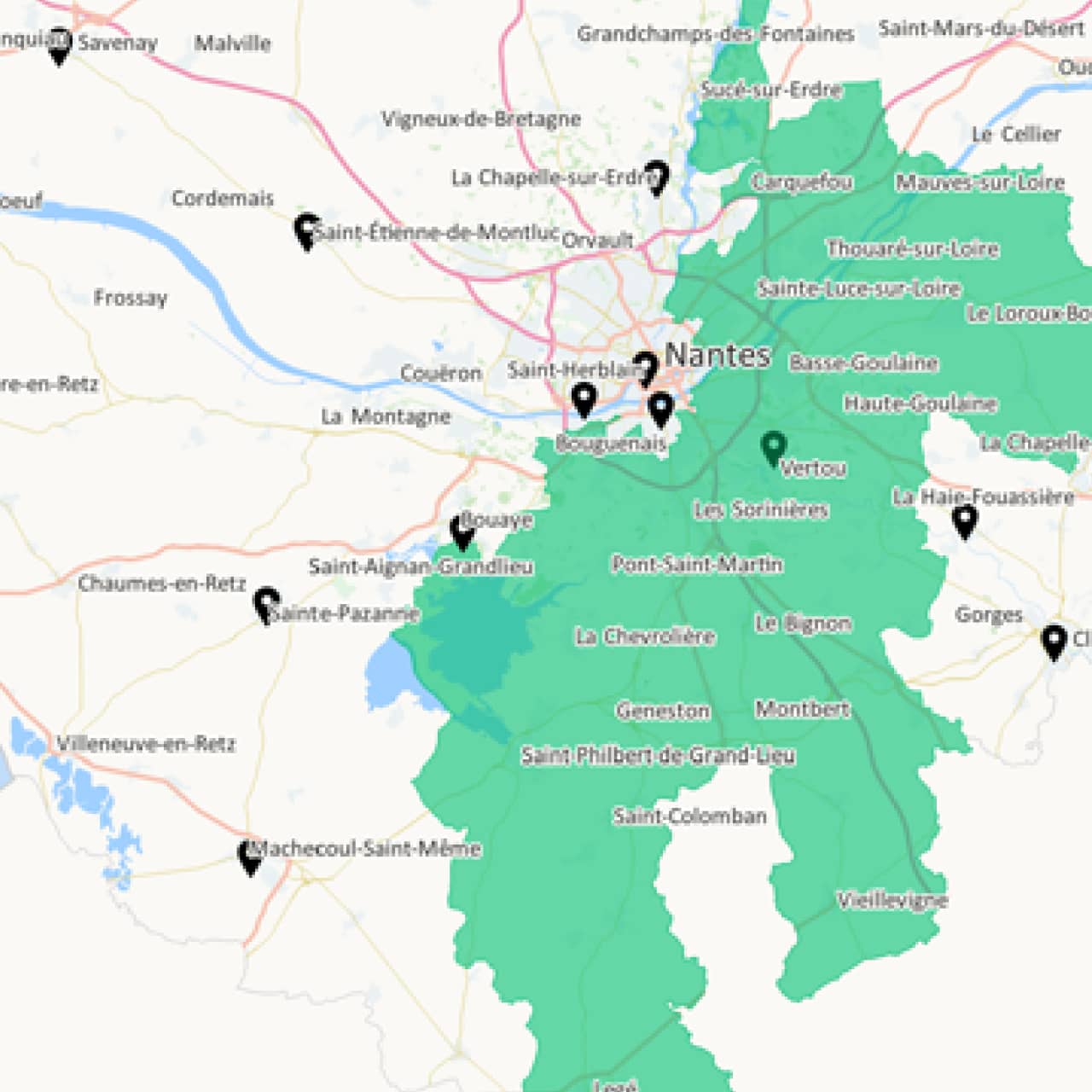Catchment area
The catchment area is the geographic area from which an agency or a sales outlets attracts its main customers, whether prospective or existing.
Catchment area analysis is an indispensable decision support tool for evaluation and optimizing the distribution of your network of sales outlets or services.
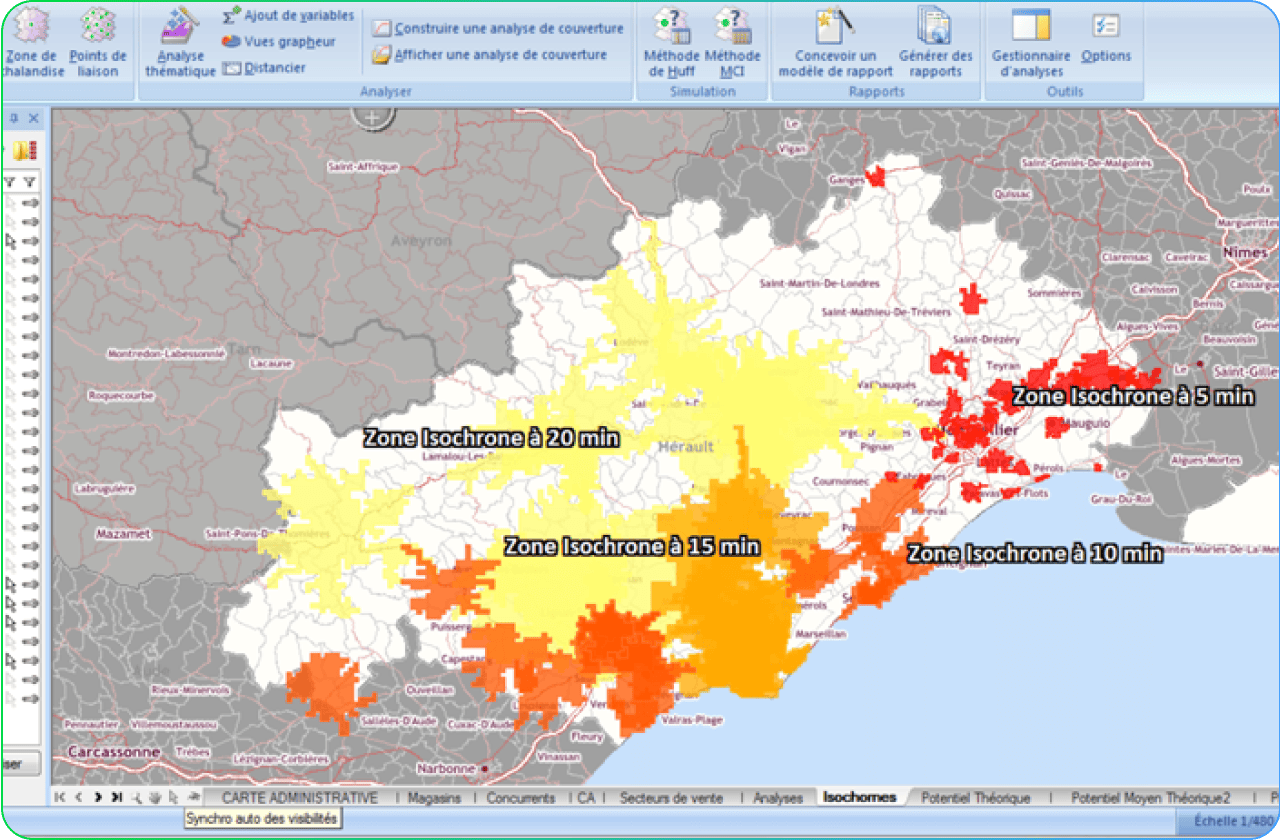
What different types of catchment area are there, and what are they used for?
The catchment area can be determined thanks to different techniques :
- with an accessibility analysis (determining isochrones, for example a less than 15-minute drive time catchment area), or with a gravity model, for an even more precise assessment
- with an analysis determining the geographical origins of the existing customers (store survey, delivery note analysis, postcode capture, check addresses analysis…)
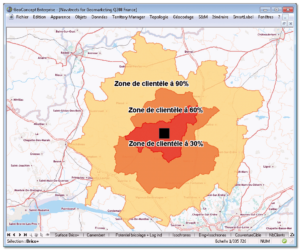
Determining the catchment area of your sales outlet is very important : you can then analyze its sales potential, according to your customers and competitors. You can carry out this analysis before setting up your new sales outlet, in order to choose the best location, but also after to optimize your marketing methods (communication, means of signaling, offer adapted to your customers…).
Comparing the potential of an area with its existing customers helps you analyze the possible improvements you would have to carry out in your local communication (poster campaigns, mails with and without addresses, advertisement in the press).
Moreover, creating and displaying isochrone areas enables you to identify the customer coverage of each of your sites and to display areas not covered or cannibalized areas.
Request a personalized demonstration or a quote
Want to learn about our prices, receive a personalized demonstration of Territory Manager, or request a specific quote? Enter your contact information below, and our experts will get back to you as soon as possible.
Any further questions?
You’ll find the answers to our customers’ most frequently asked questions here.
Nomadia is the leading French publisher of SaaS Smart Mobility solutions, guiding more than 175,000 professionals in the field every day. Our solutions are easy to use and quick to roll out, and they guarantee a significant, immediate return on investment.
Combining the expertise of a software integrator / editor with that of a consulting firm, Nomadia’s teams provide you with customized support, from data consulting to the roll-out of mobile terminals. Moreover, our technical support is available 24 hours a day, seven days a week.
Nomadia solutions guide the digital transformation of all types of mobile professionals: traveling sales representatives, delivery drivers, technicians, auditors, healthcare personnel, diagnosticians, service providers, patrolmen, experts, and more.
From small- and medium-sized companies to large corporations, our solutions can be adapted to companies of any size and in any sector.
Each Nomadia solution consists of a ready-to-use SaaS which includes a back office and a mobile business application specially designed for field operations.
Our APIs and their many connectors allow you to integrate our technologies into third-party applications, whether those are custom solutions or market standards.
Our consultant teams can also help you set up a customized solution that is perfectly adapted to your business processes.
Yes! Contact our team to get an evaluation version of the solution of your choice.
As a company committed to the planet, Nomadia naturally asserts a strong CSR (Corporate Social Responsibility) approach. We integrate social, ecological and economic issues into everything we do.
By optimizing the mobility of mobile professionals, our solutions help improve our customers’ productivity, the well-being of their employees, and the impact of their businesses on the environment.
The Nomadia teams are available to answer all your questions:
- via our online form
- by phone at +91 4443156075

